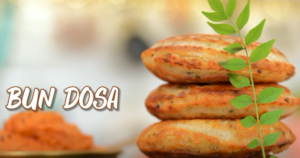How to Make Restaurant-Style Idli, Sambar, and Coconut Chutney at Home
South Indian food is synonymous with comfort, flavor, and tradition. Among the many delightful dishes this cuisine offers, Idli, Sambar, and Coconut Chutney stand out as iconic staples loved across India and beyond. This blog will guide you through a detailed, step-by-step recipe to make soft and fluffy idlis, flavorful sambar, and creamy coconut chutney that rival those served in restaurants. Let’s dive into the art of crafting these dishes at home with ease.
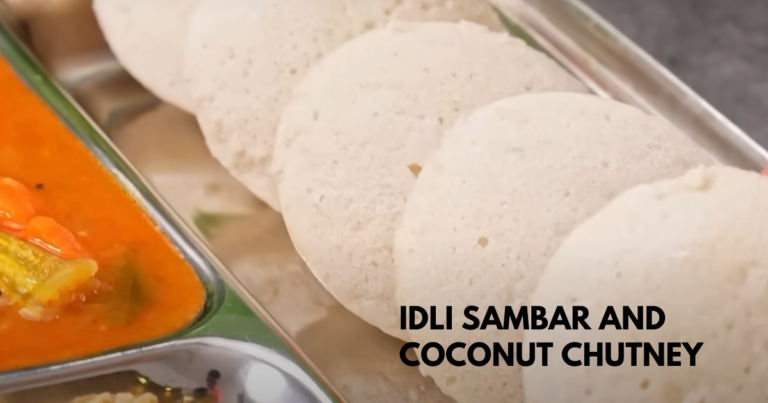
The Magic of Idli: Soft and Fluffy Perfection
Idlis are steamed rice cakes made from a fermented batter of rice and urad dal (split black gram). Here’s how you can make them effortlessly:
Ingredients for Idli:
- 3 cups rice
- 1 cup urad dal (preferably unpolished, such as Tata Sampann Urad Dal)
- 1 tsp fenugreek seeds
- 2-3 tbsp poha (flattened rice)
- Salt to taste
- Oil for greasing idli molds
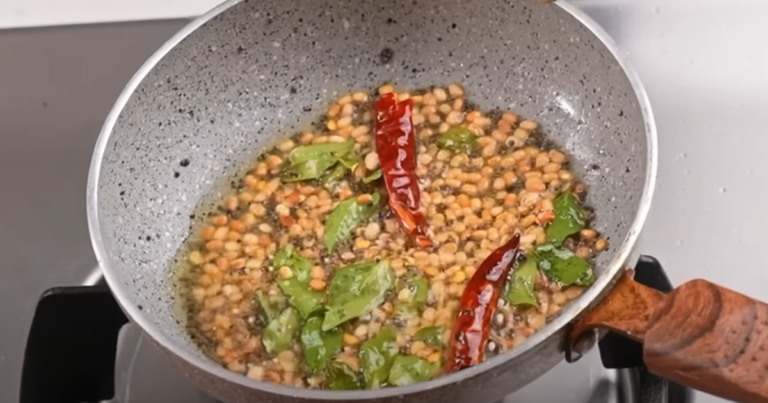
Steps to Prepare Idli:
- Soaking:
- Wash the urad dal thoroughly with water. Rub gently to remove impurities, then soak it in water for 5-6 hours or overnight in the refrigerator.
- Wash the rice using the same method and soak it in water for 5-6 hours. Add fenugreek seeds and poha to the rice for better fermentation and softness.
- Grinding:
- Drain the soaked urad dal and grind it into a smooth paste using minimal water. The batter should be light and fluffy.
- Similarly, grind the soaked rice into a fine paste. Avoid grinding the rice and dal together, as they have different textures and grinding times.
- Mixing:
- Combine the urad dal and rice batter in a large mixing bowl. Use your hands to mix thoroughly, as the natural bacteria on your hands help ferment the batter.
- Cover the batter and let it ferment for 8-10 hours in a warm place. The batter should rise and double in volume.
- Steaming:
- Add salt to the fermented batter and mix gently. Grease the idli molds with oil and pour the batter into them, filling only halfway to allow room for the idlis to rise.
- Steam the idlis for 15 minutes on medium flame. Ensure the molds do not touch the water in the steamer.
- Once cooked, let the idlis cool slightly before removing them from the molds. Enjoy their soft, pillowy texture!
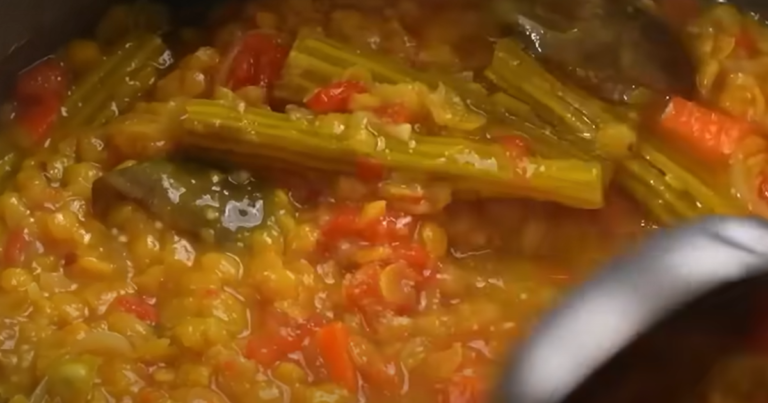
The Heart of South Indian Food: Sambar
Sambar is a flavorful lentil-based vegetable stew, enhanced with spices and tamarind. Here’s how to prepare a restaurant-style sambar:
Ingredients for Sambar:
- 1 cup toor dal (pigeon pea lentils)
- 2 medium onions, chopped
- 2 medium tomatoes, chopped
- Curry leaves
- 1-2 carrots, diced (or vegetables of your choice)
- 2 green chilies
- 2-3 tbsp sambar powder
- 1 tsp turmeric powder
- Tamarind pulp (2 tbsp or as per taste)
- 1 tsp jaggery or sugar
- 3 cups water
- Salt to taste
Steps to Prepare Sambar:
- Cooking the Lentils:
- Wash the toor dal thoroughly and cook it in a pressure cooker with 3 cups of water, turmeric, and salt until soft (about 3 whistles).
- Preparing the Vegetables:
- Heat 2-3 tbsp oil in a pan. Add curry leaves and green chilies, followed by the onions and carrots. Sauté for 3-4 minutes.
- Add the chopped tomatoes and cook until soft.
- Combining Lentils and Vegetables:
- Add the cooked dal to the vegetable mixture. Stir well and adjust the consistency by adding water.
- Add sambar powder, tamarind pulp, and jaggery. Let it simmer on low heat for 10 minutes.
- Tempering:
- Heat 2 tbsp oil in a tadka pan. Add mustard seeds, dried red chilies, and curry leaves. Once the mustard seeds splutter, pour the tempering over the sambar.
- Mix well and serve hot.
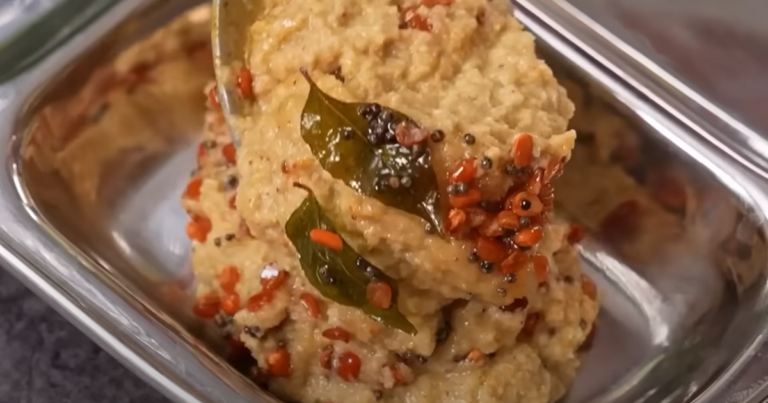
The Perfect Accompaniment: Coconut Chutney
No South Indian meal is complete without coconut chutney. Its creamy texture and tangy flavor balance the hearty idlis and sambar beautifully.
Ingredients for Coconut Chutney:
- 1 cup grated fresh coconut
- 2 tbsp roasted gram dal
- 1 green chili
- 1 tsp tamarind pulp
- Salt to taste
- Water as needed
Steps to Prepare Coconut Chutney:
- Blending:
- Blend grated coconut, roasted gram dal, green chili, tamarind pulp, and salt with a little water until smooth.
- Tempering:
- Heat 1 tbsp oil in a pan. Add mustard seeds, a pinch of urad dal, curry leaves, and dried red chilies. Let them sizzle.
Pour the tempering over the chutney and mix well.
Pro Tips for Perfect Results:
- Use unpolished urad dal and high-quality sambar powder for authentic flavors.
- Ferment the idli batter in a warm environment to ensure it rises well.
- Adjust the sambar’s consistency by adding water gradually.
- Use fresh coconut for the chutney to achieve a creamy texture.
FAQs About South Indian Food
Q1: What makes South Indian food unique?
South Indian food is characterized by its use of rice, lentils, and spices. Dishes like idli, dosa, sambar, and chutney are known for their balance of flavors and nutritional value.
Q2: How can I ensure my idlis are soft and fluffy?
Use the right proportion of rice to urad dal (3:1) and ferment the batter adequately in a warm place. Adding poha or fenugreek seeds can further enhance softness.
Q3: Can I use store-bought sambar powder?
Yes, store-bought sambar powder works well. Brands like Tata Sampann offer high-quality options with authentic flavors.
Q4: How long can I store the batter?
Fermented idli batter can be stored in the refrigerator for up to 3 days. Ensure it’s covered to prevent drying.
Q5: Can I make coconut chutney without fresh coconut?
Yes, you can use frozen coconut or desiccated coconut as an alternative. Rehydrate the desiccated coconut with warm water before blending.

Mumbai Style Vada Pav: The Ultimate Guide to India’s Beloved Street Food

Indian Street Food Delight: Paneer Shawarma Style Roll
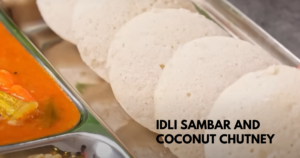
How to Make Restaurant-Style Idli, Sambar, and Coconut Chutney at Home
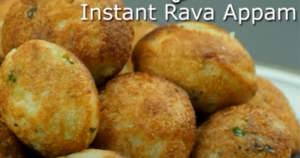
Instant Rava Appam Recipe: A Quick and Tasty South Indian Delight
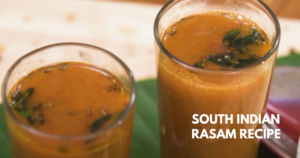
South Indian Rasam Recipe: A Taste of Tradition and Flavor
